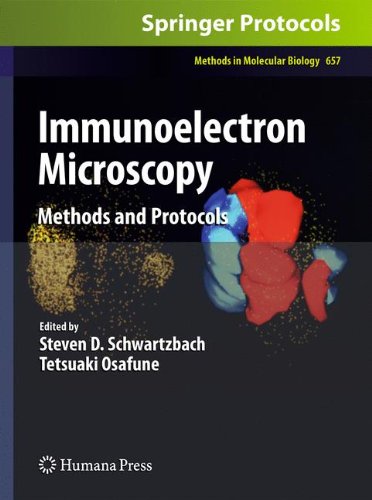

Most ebook files are in PDF format, so you can easily read them using various software such as Foxit Reader or directly on the Google Chrome browser.
Some ebook files are released by publishers in other formats such as .awz, .mobi, .epub, .fb2, etc. You may need to install specific software to read these formats on mobile/PC, such as Calibre.
Please read the tutorial at this link: https://ebookbell.com/faq
We offer FREE conversion to the popular formats you request; however, this may take some time. Therefore, right after payment, please email us, and we will try to provide the service as quickly as possible.
For some exceptional file formats or broken links (if any), please refrain from opening any disputes. Instead, email us first, and we will try to assist within a maximum of 6 hours.
EbookBell Team

4.7
66 reviewsImmunoelectron microscopy is a key technique that bridges the information gap between biochemistry, molecular biology, and ultrastructural studies placing macromolecular functions within a cellular context. In Immunoelectron Microscopy: Methods and Protocols, expert researchers combine the tools of the molecular biologist with those of the microscopist. From the molecular biology toolbox, this volume presents methods for antigen production by protein expression in bacterial cells, methods for epitope tagged protein expression in plant and animal cells allowing protein localization in the absence of protein specific antibodies as well as methods for the production of anti-peptide, monoclonal, and polyclonal antibodies. From the microscopy toolbox, sample preparation methods for cells, plant, and animal tissue are presented. Both cryo-methods, which have the advantage of retaining protein antigenicity at the expense of ultrastructural integrity, as well as chemical fixation methods that maintain structural integrity while sacrificing protein antigenicity have been included, with chapters examining various aspects of immunogold labeling. Written in the highly successful Methods in Molecular Biology™ series format, chapters include introductions to their respective topics, lists of the necessary materials and reagents, step-by-step, readily reproducible laboratory protocols, and notes on troubleshooting and avoiding known pitfalls. Authoritative and essential, Immunoelectron Microscopy: Methods and Protocols seeks to facilitate an increased understanding of structure function relationships.